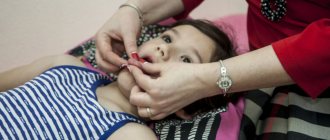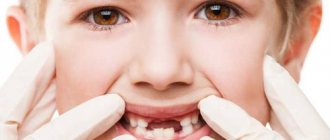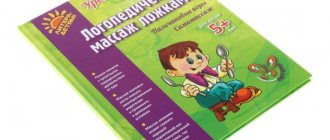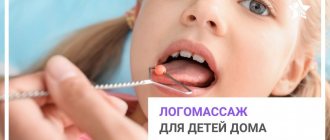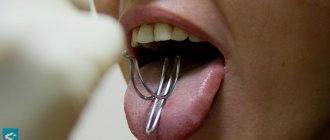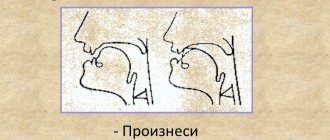Massage is widely used in the treatment of scoliosis, although it is only effective in combination with other methods. It is prescribed both in the initial stage and with progressive curvature, and the intensity and type of impact is determined by the condition of the spinal column. What does spinal massage do for scoliosis, can it be done at home, and does it have any contraindications?
Spinal massage for scoliosis
Why do you need a massage?
When the spine is curved, the back muscles are used unevenly, as a result of which some areas are pinched and weakened, while others are overloaded. Impaired muscle tone provokes back pain and contributes to further progression of the disease.
With scoliosis, muscle tone is lost
With the help of a competent massage, this imbalance is eliminated: tense muscles are relaxed, tense muscles, on the contrary, are activated. Additionally, massaging problem areas improves their blood flow, metabolism, and calms the nervous system.
Massage helps restore muscle tone
Of course, it is impossible to straighten the spinal column with massage alone; this requires regular work on the muscles and ligaments with the help of exercise therapy. But the systematic use of massage together with physical therapy brings great benefits to the body and speeds up recovery. The most important thing is to use the correct massage technique so that the effect on the body is safe.
What methods of influence will the massage therapist use?
Medical massage includes many techniques and methods. The nature of the effect depends on the patient's medical history and condition. For example, procedures after an injury can be combined with cold exposure - this helps relieve swelling and increase joint mobility. However, several types of medical massage can be distinguished:
- Classic . Performed using oil, it is based on the use of basic massage techniques. The nature of the movements is stroking and rubbing.
- Spot . The specialist acts on certain points with his fingers or elbows. By pressing on a bioactive point in the body, certain centers responsible for pain and regeneration processes are activated.
- Periosteal . Necessary for diseases of the musculoskeletal system, which are closely related to pathologies of internal organs. Massage improves lymph flow and blood circulation, helps relieve pain.
- Connective tissue . The massage is aimed at improving the functioning of the ligaments. Due to this, you can get rid of pain, reduce swelling and stiffness, and restore joint mobility.
- Reflex . The technique is based on the idea that the human body is a complex self-healing system in which all elements are closely connected. Exposure to certain areas gives a response, and on the basis of this a conclusion is made about a possible dysfunction of the organ. With the right technique, neurological diseases and various diseases of the internal organs can be cured. The methodology of this type of massage is considered one of the most difficult because it requires specific knowledge from the field of neurology.
- Hardware . Based on the use of special equipment. The impact can be due to ultrasound, infrared radiation, weak electric shocks, etc.
The type of massage is selected individually; other physiotherapeutic procedures can be prescribed in combination.
Contraindications for massage
Intensive warm-up of the spine does not always bring benefits: in some cases, massage leads to exacerbations of diseases, microtraumas, vertebral displacements and other negative phenomena. Contraindications to massage are:
- acute inflammatory processes in the body;
- liver and kidney problems;
- oncological diseases;
- diseases of the respiratory system;
- heart failure;
- neuralgic disorders;
- exacerbation of peptic ulcer;
- skin diseases;
- high pressure.
High blood pressure is a contraindication to massage
Massage is not temporarily prescribed for people who have suffered a stroke, heart attack, or surgery. After recovery, a certain time must pass until the body is fully restored. Therapeutic massage is also contraindicated during pregnancy and the postpartum period. In any case, a doctor should prescribe a course of procedures, and only based on the results of the examination.
During pregnancy, therapeutic massage is not indicated
Features of therapeutic massage
For scoliosis, the massage should be differentiated, that is, the effect on each problem area of the back is carried out differently. Tense, shortened muscle groups need to be relaxed and stretched, while unused muscles, on the contrary, need to be stimulated and their tone increased. Accordingly, massage is performed with different intensities, and different movements are used. For certain areas where there is increased pain, thickening under the skin, muscle spasms, acupressure and segmental reflex massage techniques are used.
For scoliosis, massage should be differentiated
Massage is carried out in courses, the frequency and duration of which is determined individually for each patient. Typically, the course includes 15-20 procedures, and the time gradually increases from 15 minutes to an hour. The break between courses lasts from 2 to 6 months, and to obtain a stable result from such courses, at least 3 are required, with regular exercise therapy classes.
Massage is carried out in courses
Prices for massagers
At the beginning of the development of the disease, massage can be done by someone close to you at home. To learn the basic technique, just watch how an experienced massage therapist does it, and then strictly follow his recommendations.
You can study the movements of a massage therapist and repeat them at home
For grade 2 scoliosis, you need to take at least one course from a specialist, and for grade 3 curvature, all procedures are recommended to be carried out in a massage room. You can do massage at home only with the permission of your doctor. The more advanced the disease, the more carefully you need to act on the spine, otherwise injuries cannot be avoided.
A massage therapist in a clinic, a massage therapist in a beauty salon, a chiropractor: what’s the difference?
The massage therapist works on the patient's body with his hands, kneading, patting, stroking, rubbing, shaking, pressing, rolling and vibrating. Unlike a chiropractor, he does not have the right to prescribe treatment or realign joints and vertebrae.
A “manual specialist” is a doctor who graduated from a medical school, residency or internship in the specialty “neurologist” or “traumatologist-orthopedist”. In addition, such a doctor has additionally completed a specialized retraining program in manual therapy.
A massage therapist in a medical clinic is a specialist with a secondary medical education in the specialties “therapeutic physical education”, “medical massage”, “nursing”, “physical rehabilitation and recreation”, “massage nurse”. An option with retraining is possible, but only if you have a secondary medical education. Such a specialist has the right to conduct medical, sports, myofascial and other types of massage. Without confirmed qualifications, a person will not be able to perform such procedures and get a job in a clinic. If this norm is violated, then according to Article 69, Article 323 of the Federal Law, the person bears criminal liability.
A massage therapist in a beauty salon, as a rule, does not have a medical education and provides non-medical massage (cosmetological, relaxing). The theoretical and practical knowledge base of a specialist is limited to short-term courses (53-72 academic hours). In this case, the quality of services is practically not confirmed by anything other than the reputation of the salon.
Execution technique
The full treatment involves massaging different parts of the body, but most of the time is spent working on the back. The patient should lie on his stomach, straighten his legs, place his arms parallel to the body. It is very important that the head is turned in the direction opposite to the arc of curvature.
Working out tight muscles
| Stages of the procedure | Description |
| Apply massage oil and distribute it over the entire back with light sweeping movements. Begin massaging the convex side. With both palms, strokes are performed in the direction from the lower back up and towards the shoulder blades, gradually increasing the intensity of the movements. Duration – 15-20 seconds. |
| Start rubbing. The base of the palm is pressed to the back and longitudinal movements are made from the buttock to the shoulder and back. Rubbing is done with one hand, the second lies on the other side of the back. Change the position of the hands: when moving up, the fingers are tucked and touch the back with the knuckles (comb-like movements), when moving down, the fingers are straightened and slightly spread (rake-like movements). |
| Place your palms on your back with an edge and rub them intensively with both hands, starting from the shoulder blade and gradually moving to the lower back and grabbing a third of the buttock. The direction of movement is from the spine to the sides. Alternate sawing with longitudinal stroking with an open palm from the shoulder to the lower back and back. |
| Massage the intercostal spaces with your fingertips. The fingers are slightly spread to simultaneously grasp several spaces and run along the ribs in the direction from the spine to the sides. At the end, rub this part of the back with the palm of your hand, moving from the shoulder to the buttock and back. |
| Using the base and edge of the palm, knead the upper third of the buttock and the ilium. Next, one palm is applied to the back, pressed from above with the second hand and massaged in a circular motion from bottom to top. The emphasis is placed not on the base of the palm, but on four fingers. After this, the thumb is retracted and grasping movements are performed, collecting the skin into folds. Knead from the lower back to the shoulder blade. |
| Continue warming up the convex side with light transverse strokes with both hands. Be sure to grab the sides, the ilium, part of the buttock, and forcefully draw your thumb along the spinal column. |
| Perform the “oblique roller” movement - one hand from below picks up and lifts the skin, the second hand rolls the fold from above. Massage from the buttock to the shoulder, be sure to grab the side, after which they place the fingers of one hand on the intercostal spaces, press on top with the other hand and rub with force from the vertebra to the stomach. You should knead more deeply and intensively than before. |
| Start warming up the shoulder blades on the same side of the back. Raise it with one hand so that the shape of the bone is clearly defined, after which the thumb of the other hand carefully knead the area under the shoulder blade. During the massaging process, it is necessary to press the finger as deeply as possible, guided by the patient’s sensations. If such actions are too painful, the force of impact should be reduced. Next, the patient's arm needs to be bent and placed on the back to open another group of muscles under the shoulder blade. Next, knead the area around the shoulder blade with the thumb and heel of the palm. |
| Place your palm on your back, press it on top with your second hand and massage from the shoulder to the buttock in a circular motion. The emphasis is on the base of the palm. After this, with light movements of open palms, stroke the back from the spine up and to the side. |
This completes the massage of the convex side. If everything is done correctly, the patient will feel only pleasant warmth and relaxation on this side of the back. Now you can move on to the other side, where the muscles are stretched and do not function fully.
Complex 4. From 6 to 9 months. Improving coordination of movements
At the age of 6–9 months, the baby must be taught to crawl correctly, coordinating the movements of the arms and legs for this purpose. In gymnastics and massage, the focus of attention from the arms and legs moves to the chest, back and abdomen, and the massage of these areas becomes more energetic.
- Crossing arms (6 – 8 times).
- Exercises for legs: simultaneous extension and bending of legs (4 – 6 times); alternate extension and bending of the legs (4 – 6 times with each leg).
- Turns on your stomach.
- Massage of the buttocks and back.
- Crawling on all fours.
- Abdominal massage.
- Squats with spine bending (1 – 2 times).
- Circular movements with your arms (4 – 6 times).
- Foot massage.
- Raising straight legs (6 – 8 times).
- Lifting from a prone position (1 – 2 times).
- Breast massage.
- Squat with support from bent arms (1 – 2 times).
- Boxing exercise (5-6 times with each hand).
- Exercise "wheelbarrow".
